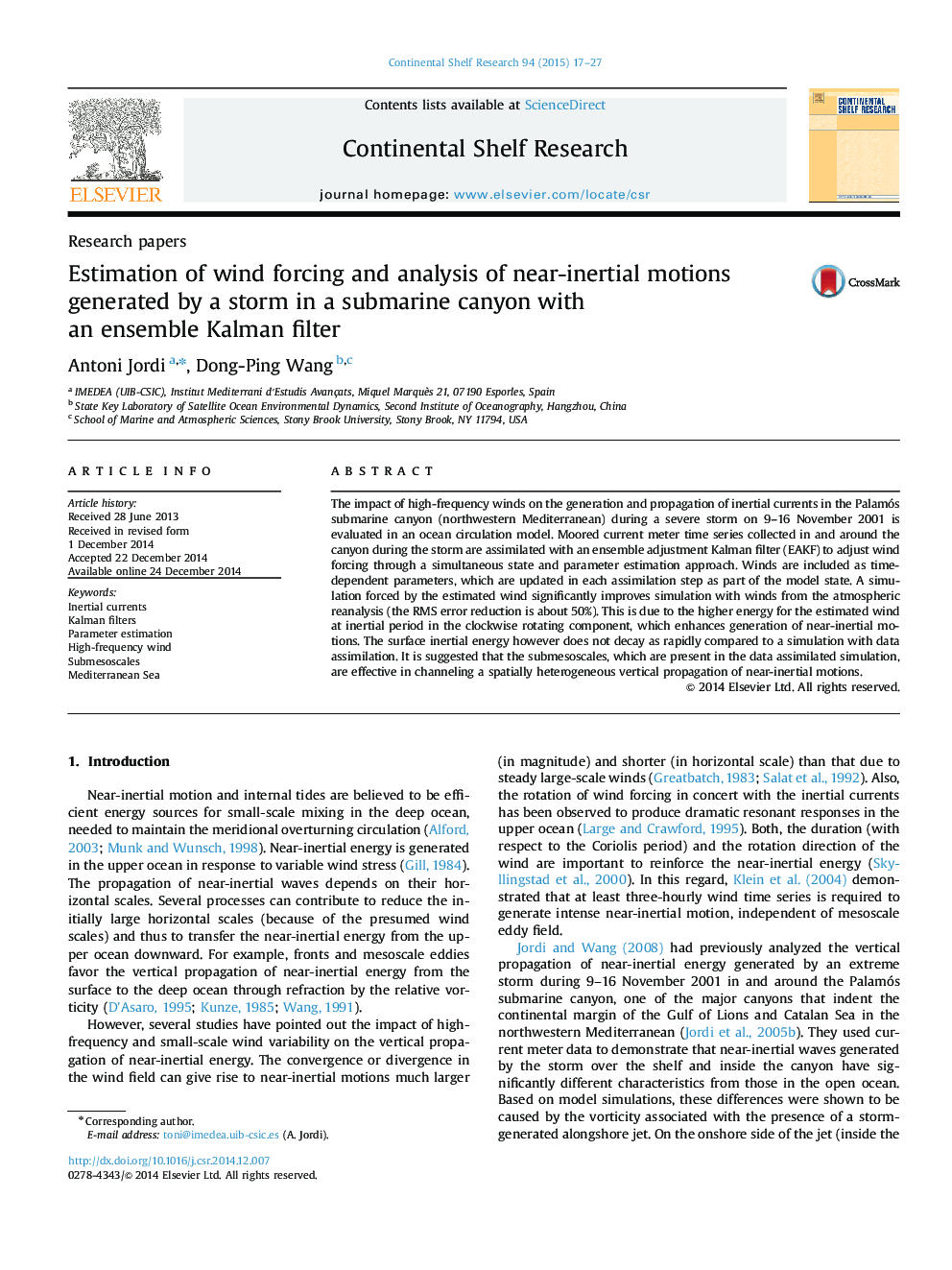| Article ID | Journal | Published Year | Pages | File Type |
|---|---|---|---|---|
| 4531750 | Continental Shelf Research | 2015 | 11 Pages |
•Impact of high-frequency wind on inertial motion in the Palamós canyon is analyzed.•Wind forcing is estimated through simultaneous state and parameter estimation.•A simulation forced by the estimated wind significantly improves model results.•The decay timescale however is faster for a simulation with data assimilation.•Submesoscales in the data-assimilated model favor propagation of inertial motions.
The impact of high-frequency winds on the generation and propagation of inertial currents in the Palamós submarine canyon (northwestern Mediterranean) during a severe storm on 9–16 November 2001 is evaluated in an ocean circulation model. Moored current meter time series collected in and around the canyon during the storm are assimilated with an ensemble adjustment Kalman filter (EAKF) to adjust wind forcing through a simultaneous state and parameter estimation approach. Winds are included as time-dependent parameters, which are updated in each assimilation step as part of the model state. A simulation forced by the estimated wind significantly improves simulation with winds from the atmospheric reanalysis (the RMS error reduction is about 50%). This is due to the higher energy for the estimated wind at inertial period in the clockwise rotating component, which enhances generation of near-inertial motions. The surface inertial energy however does not decay as rapidly compared to a simulation with data assimilation. It is suggested that the submesoscales, which are present in the data assimilated simulation, are effective in channeling a spatially heterogeneous vertical propagation of near-inertial motions.
